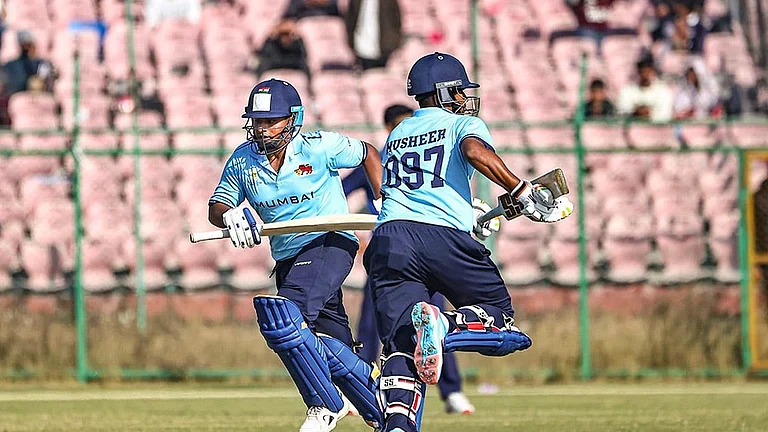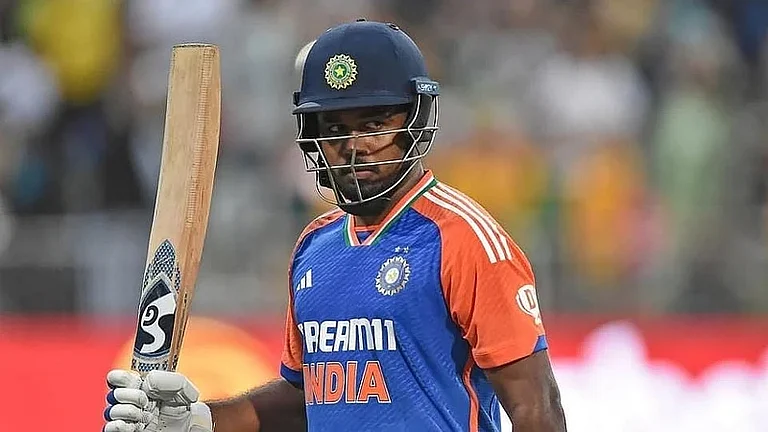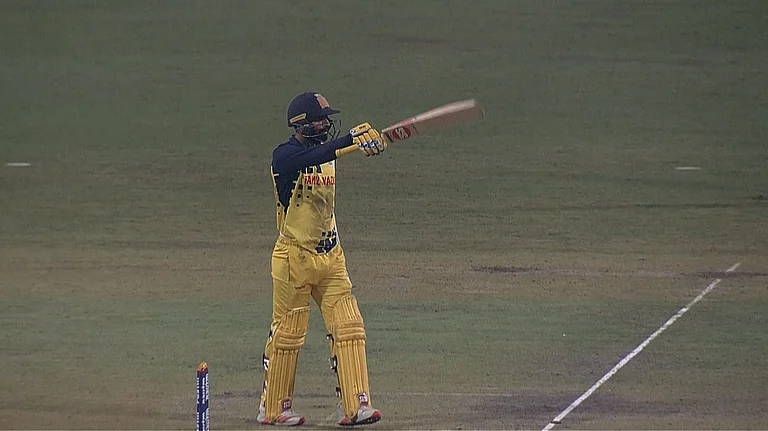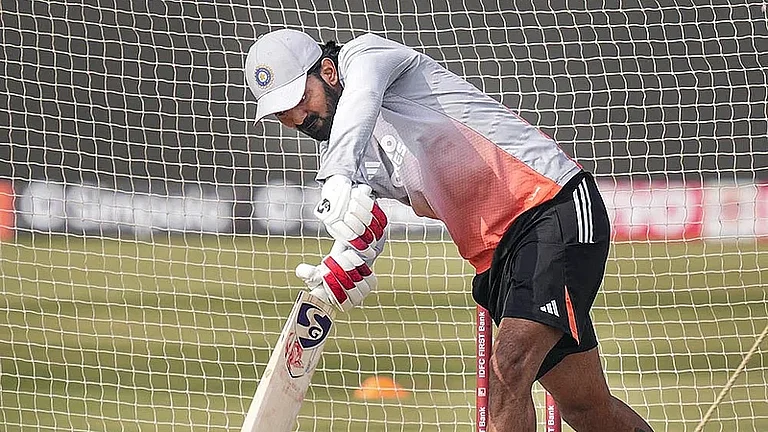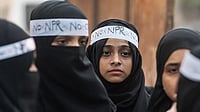It was January 11, 1982, and the then Bombay Police had received a tip-off, reportedly from the Dawood Ibrahim gang, that another gangster, Manohar Surve alias Manya, would be visiting a beauty salon located near the Ambedkar College junction in Wadala. At around 1.30 pm, 18 officers of the Mumbai Crime Branch split into three teams, awaiting his arrival. After about 20 minutes, Surve was spotted stepping out of a taxi. Before the gangster could fire from his Webley & Scott revolver, the police pumped five bullets into his chest and shoulder. A few minutes later, he succumbed to his injuries in an ambulance as he was being taken to Sion Hospital. This was the first recorded encounter against a gangster by the police in Mumbai. It was also the beginning of a new chapter in the city’s criminal underworld.
In the late 1980s, new recruits passing out of the Maharashtra Police Academy in Nashik only had one destination in mind, Bombay, a posting with potential money and influence. At that time, the underworld in Mumbai was flush with money and firepower; and kidnappings, contract killings and extortions were just another day in office. Inter-gang rivalry for the supremacy of Mumbai played out on the streets and gangsters like Karim Lala, Babu Reshim and Rajan Nair (known as Bada Rajan) were engaged in carrying out hits against each other. The powerful Pathan gangs were in a pitched battle against the brash Dawood Ibrahim. There was palpable fear among the people and they were growing restless over ‘police inaction’.
This was the situation in which 200 cadets of the 1983 batch graduated from the police academy, a training school for cadets joining the police force across Maharashtra. Of these 200 cadets, 90 were posted in Bombay. A dozen of them went on to become part of the infamous encounter squad of the Bombay Police and took on the gangsters and decimated their gangs ruthlessly. The squad included the late Vijay Salaskar, who was killed by terrorist Ajmal Kasab during the November 2008 terror attack in Mumbai, Pradeep Sharma, Praful Bhosale, Ravindra Angre, Arun Borude, Aslam Momin, Vinayak Saude and the late Raju Pillai, who played a key role in curbing the underworld menace in Bombay.
There was nothing to distinguish these 12 from the other police officers. Trained by the late DGP Arvind Inamdar, these 12 were considered to be star pupils of their batch. After serving at different police stations in the first few years of their careers, they became part of the then-Bombay Crime Branch, a much sought-after posting. They were very good at sleuthing and built an enviable network of informers. As tip-offs started coming in, these officers went in for the kill and wrecked severe damage on the gangs.
The first encounter killing undertaken by a member of the squad was in 1993. Newly-appointed sub-inspectors Salaskar and Sharma went along with inspector Shankar Kamble to catch gangster Subhash Makdawala. While they were pursuing him, as the story goes, a shootout ensued between the police and the gangster who was wielding an AK-56. Sharma shot dead Makdawala. Later on, the other 10 officers joined them to reduce the stranglehold Dawood Ibrahim, Chhota Rajan, Arun Gawli, Amar Naik, Ashwin Naik and others had on Bombay. They earned the moniker “encounter specialists” and turned the streets of Bombay into battlefields in their quest to finish off the gangs. Later on, other officers like Daya Nayak and Sachin Vaze were added to this squad.
Speaking to Outlook, a now-retired director general of police who had headed the Bombay Crime Branch and Anti-Terrorism Squad, says: “They became larger-than-life figures. They came to be known by the number of encounters they participated in. As the media started profiling them and filmmakers showed their stories on celluloid, they got too big. Many from this batch started undertaking contracts from various gangs to eliminate their rivals. Some of them are said to have aligned with various gangs and this led to an infighting amongst them. If one group of encounter specialists shot dead some gangster, the other group would shoot rival gang members. Crime reporters started aligning themselves with the various encounter specialists and the muck set in,” adds the DGP, who spoke on condition of anonymity. “The gangs were eliminated and people started feeling safe. But the methods used by these policemen were questionable. The entire squad had to be disbanded due to allegations corruption and contract killings for the gangs,” the officer adds.
There were whispers that the government of the time and the police force bosses gave a free run to these ‘specialists’—a ‘clean’ Mumbai was good for the image of both. It is said that it all started in 1983 when supercop Julio Ribeiro was the Bombay police commissioner. The gangsters at that time were so powerful that local police stations were unable to handle them. Ribeiro decided to take the criminals head on and assembled specialist teams to implement a ‘bullet for bullet’ policy. Each team had two specialists, one senior and a junior. The first lot of encounter specialists faded into the background as gangland activities got more secretive. The class of 1983 was part of the second revival of the encounter specialists in the 1990s.
But this had a counter-effect. The specialists started getting trigger-happy and soon it became a competition—they started counting the number of gangsters they killed. While some of these officers boasted of upto 80 encounters, others had over a 100 to their name. Pillai and Saude preferred to keep a low profile, while the other “encounter specialists” lived life king size. It was Pillai who, in an encounter with the Chhota Rajan gang member D.K. Rao, pumped eight bullets into him, nearly killing him. The encounter saw the arrest and incarceration of one of the most dreaded gangsters in the Mumbai underworld.
According to a story narrated by a gangland source, Arun Gawli was so terrified of Salaskar that he thought the police officer would kill him in an encounter. Every day, for months on end, all Salaskar did was to park his police jeep in front of Gawli’s den, Dagdi Chawl, and stand there leaning on the bonnet with his arms folded at his chest. “Daddy (as Gawli is known in the underworld) would be shivering. Salaskar scared him to death,” the source tells Outlook.
There was talk about these encounter specialists getting involved in the rivalries of the gangsters. The rivalries between these encounter specialists turned them into bitter foes and they started squealing against each other in the media. This led to crime reporters playing favourites and propping up officers. A senior police officer, now retired, tells Outlook that the media was in a way responsible for pitting the encounter specialists against each other. “If one member of the press wrote about Daya Nayak one day, the next day, another reporter from a rival newspaper would write about Pradeep Sharma. A third rival newspaper would write about Sachin Vaze and so on,” says the officer. “The encounter specialists would give expensive gifts to the crime reporters to ensure that they kept writing about them. The gifts included Blackberry phones, home theatre systems, state-of-the-art television sets and in some cases even flats and benami land, the source adds. Not to be left behind, Bollywood too jumped onto the adulation bandwagon and films such as Shootout at Wadala, Risk and Ab Tak Chhapan were made on swashbuckling, sunglass-wearing and stylish encounter specialists.
Between 1997 and 2003, the 1983 batch of specialists is said to have killed over 600 gangsters. Poor supervision, groupism, corruption in the IPS and political patronage made these men a law unto themselves. Following an uproar within the police force and their involvement in various controversies, the encounter squad was disbanded. At one point, Ribeiro had even called these officers “rascals in uniform”.
The tide turned against these cops and soon the hunter became the hunted. Praful Bhosale was suspended for his involvement in the custodial death of Khwaja Yunis but was reinstated later. Ravindra Angre was dismissed from service in 2014 for various reasons. Pradeep Sharma was dismissed from service in 2008 for alleged gangland connections but was reinstated in August 2017. He was arrested in a widely-publicised fake encounter case of Lakhan Bhayya in 2010 but was acquitted in 2013. Sharma was reinstated by the Devendra Fadnavis government in 2017, overlooking his chequered history. He is presently in prison along with Sachin Vaze for planting an explosive-laden vehicle in front of the house of industrialist Mukesh Ambani about two years ago.
Sharma resigned from the police force in 2019 and contested the 2019 Maharashtra assembly polls as a Shiv Sena candidate. In his election affidavit he had declared personal assets worth Rs 56 crore—a figure that is well beyond the known sources of income of a policeman. Vaze was reinstated by the Uddhav Thackeray government after a 17-year suspension when he also faced murder charges. Salaskar too was involved in numerous controversies before he was felled by bullets of Pakistani terrorist Kasab in Mumbai.
(This appeared in the print edition as "The Dirty Dozen")
Haima Deshpande in Mumbai







